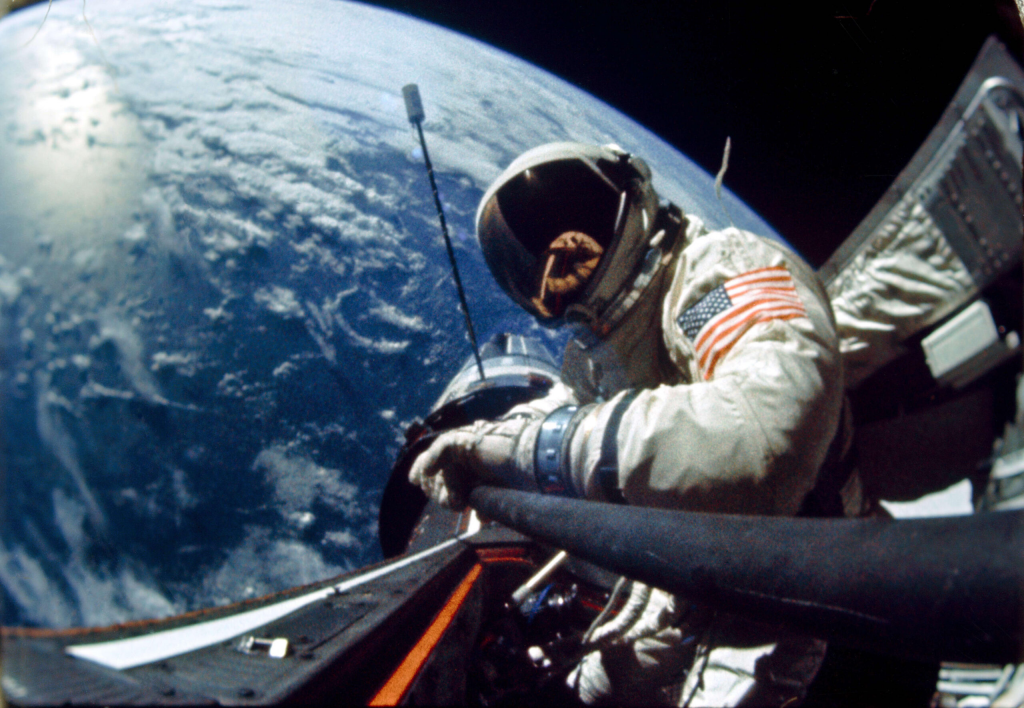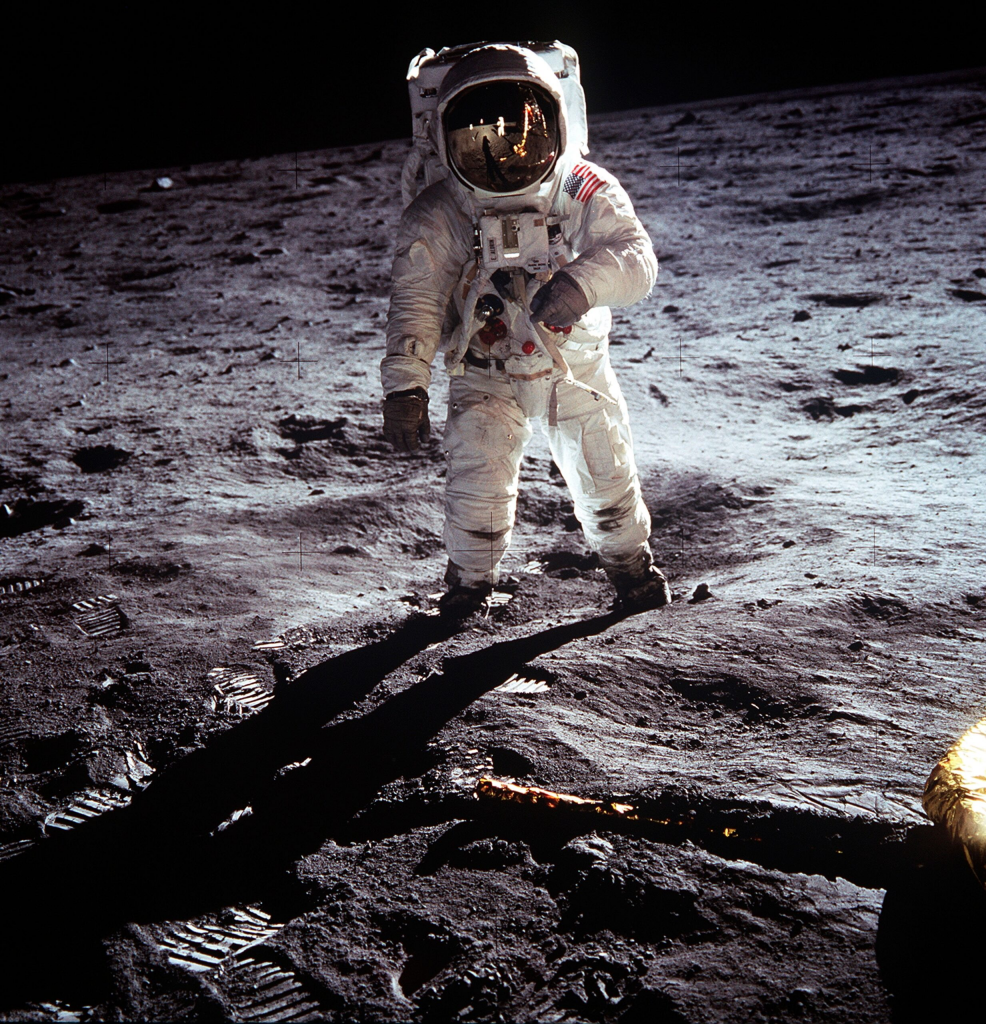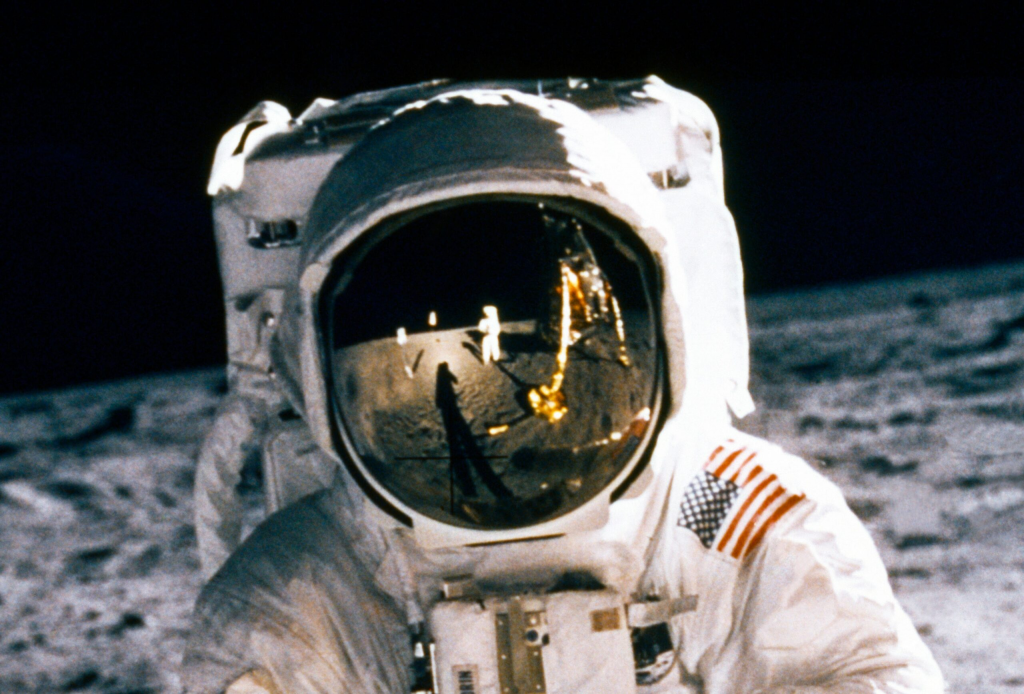The internet has once again erupted over an infamous clip featuring none other than legendary astronaut Buzz Aldrin. The viral footage, which has made its rounds multiple times over the years, continues to spark intense discussions among space enthusiasts and conspiracy theorists alike.
One amused viewer commented, “I could watch this all day! High five, Buzz,” expressing sheer delight over the clip. Another person chimed in, “That’s how real men deal with these troublemakers who have nothing better to do.” Meanwhile, a third person humorously added, “One small punch for Buzz, one giant punch for humanity.” The reactions have been overwhelmingly supportive of Aldrin’s actions, with many praising his patience before finally taking a stand against those who seek to diminish his accomplishments.

Buzz Aldrin, along with Neil Armstrong, made history when they became the first humans to step foot on the Moon as part of NASA’s monumental Apollo 11 mission. This landmark achievement, broadcast to millions worldwide, remains one of the most iconic moments in human history. It was a triumph not only for NASA but for the entire world, cementing the United States’ dominance in the intense space race against the Soviet Union. Yet, despite the overwhelming evidence and technological advancements that made this feat possible, skeptics continue to question whether the Moon landing actually took place.
The roots of Moon landing skepticism can be traced back to one of its most influential figures, Bill Kaysing. A former employee of Rocketdyne, a company that played a crucial role in developing rocket engines for the Apollo program, Kaysing became one of the first to openly challenge NASA’s accomplishment. His 1976 self-published book, We Never Went to the Moon: America’s Thirty Billion Dollar Swindle, put forth an audacious claim: the Moon landing was an elaborate hoax orchestrated by the U.S. government to assert its dominance in the space race without the inherent risks and astronomical costs of actual space travel.

Although Kaysing’s allegations were widely dismissed by the scientific community due to a glaring lack of credible evidence, his ideas gained traction among those who harbored distrust toward the government. Over the decades, his theories have been amplified, particularly with the rise of the internet, which has allowed misinformation to spread at an unprecedented rate. The debate, though dismissed by experts, has persisted, with skeptics pointing to supposed anomalies in the footage and images captured during the Apollo 11 mission.
One of the most frequently cited “proofs” offered by conspiracy theorists is the seemingly fluttering American flag planted by the astronauts. Given the Moon’s airless environment, skeptics argue that the flag should have remained completely still. However, NASA and space experts have long debunked this claim. The flag’s movement was a direct result of the astronauts twisting its pole into the lunar soil. Since there is no atmosphere or strong gravity to pull the flag back to a neutral position, it remained slightly bent, giving the illusion of motion.

Another argument revolves around the apparent absence of stars in the Apollo mission photographs. Conspiracy theorists argue that if the Moon truly has no atmosphere, the sky should have been teeming with stars. In reality, this can be explained by the exposure settings on the astronauts’ cameras, which were adjusted to capture the bright lunar surface. Because of this, the faint light of distant stars was not visible in the images. The same effect can be observed in daytime photography on Earth, where bright light sources overpower dimmer ones.
Shadow inconsistencies in Moon landing photographs have also fueled hoax claims. Skeptics assert that the shadows seem to be cast in multiple directions despite the Sun being the sole light source. Experts, however, have pointed out that the Moon’s uneven terrain creates optical illusions, making the shadows appear distorted. Additionally, reflective surfaces and the low lunar gravity contribute to the unique lighting effects observed in the images.
To further debunk these theories, the popular science-based show MythBusters conducted an experiment in 2008 using scale models and simulated sunlight. Their test demonstrated that non-parallel shadows can indeed appear naturally in a landscape similar to the Moon’s surface. The experiment conclusively proved that the photographic anomalies cited by conspiracy theorists do not require an artificial lighting setup and could occur naturally under the conditions present on the Moon.

Despite overwhelming evidence, including Moon rocks brought back to Earth and third-party tracking of the Apollo missions by independent observatories, conspiracy theories persist. Scientists, former NASA officials, and even competing nations like the Soviet Union never disputed the Moon landing’s authenticity. Given the intense Cold War rivalry between the U.S. and the USSR at the time, any fabrication would have likely been exposed by the Soviets, who closely monitored American space missions.
The psychological underpinnings of conspiracy theories help explain their longevity. According to psychological research, conspiracy theories offer a way for individuals to make sense of complex or uncertain events. Some people find comfort in believing that powerful organizations manipulate reality, as it provides a simplistic explanation for intricate historical moments.

Among the most vocal Moon landing skeptics is Bart Sibrel, a self-proclaimed truth-seeker who has spent years trying to discredit the Apollo missions. His controversial approach led to a notorious confrontation with Buzz Aldrin in 2002. Outside a Beverly Hills hotel, Sibrel ambushed the then 72-year-old astronaut with a film crew in tow. He aggressively demanded that Aldrin swear on a Bible that he had indeed walked on the Moon.

Aldrin, who had endured years of baseless accusations, initially tried to dismiss the situation. However, Sibrel persisted, hurling insults and branding Aldrin a “coward” and a “liar.” The situation quickly escalated, culminating in Aldrin delivering a swift punch to Sibrel’s jaw. The moment, caught on camera, became an instant sensation. While some were shocked by Aldrin’s reaction, many sympathized with him, understanding his frustration over having his legacy repeatedly called into question.

Following the incident, Beverly Hills police launched an investigation. However, after reviewing the circumstances, they decided not to press charges against Aldrin, deeming Sibrel the instigator. The encounter only bolstered Aldrin’s reputation, with many viewing him as a hero who finally stood up against relentless misinformation.
Even decades after that infamous punch, Aldrin remains an unwavering advocate for space exploration and scientific literacy. In 2019, during the celebrations marking the 50th anniversary of the Moon landing, he was asked about those who still doubt the event. Without hesitation, he reaffirmed the historic mission’s authenticity, urging people to focus on future space endeavors rather than dwelling on unfounded conspiracies.